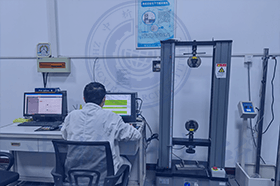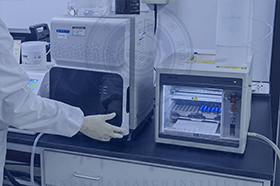檢測項目(部分)
壓碎值
巖石抗壓強度
表觀密度
堆積密度
含泥量
堅固性
有機物含量
吸水率
針片狀顆粒含量
針、片狀顆粒含量
泥塊含量
壓碎指標
卵石含泥量、碎石泥粉含量
軟弱顆粒含量
空隙率
顆粒級配
氯離子含量
堿活性
堿骨料反應(堿-硅酸反應砂漿長度法)
含水率
硫化物和硫酸鹽含量
毛體積相對密度
堿骨料反應(堿-硅酸反應快速法)
不規(guī)則顆粒含量
洛杉磯磨耗損失
表干密度
檢測樣品(部分)
石(粗集料)
粗集料
檢測標準(部分)
1.1 This test method covers the determination of the average density of a quantity of coarse aggregate particles (not including the volume of voids between the particles) the relative density (specific gravity) and the absorption of the coarse aggregate. Depending on the procedure used the density (kg/m3 (lb/ft3)) is expressed as oven-dry (OD) or as apparent density. Likewise relative density (specific gravity) is expressed as OD SSD or as apparent relative density (apparent specific gravity). The OD density and OD relative density are determined after drying the aggregate. The SSD density SSD relative density and absorption are determined after soaking the aggregate in water for a prescribed duration.
1.2 This test method is used to determine the density of the essentially solid portion of a large number of aggregate particles and provides an average value representing the sample. Distinction is made between the density of aggregate particles as determined by this test method and the bulk density of aggregates as determined by Test Method C 29/C 29M which includes the volume of voids between the particles of aggregates.
1.3 This test method is not intended to be used with lightweight aggregates.
1.4 The values stated in SI units are to be regarded as the standard for conducting the tests. The test results for density shall be reported in either SI units or inch-pound units as appropriate for the use to be made of the results.
1.5 The text of this test method references notes and footnotes which provide explanatory material. These notes and footnotes (excluding those in tables and figures) shall not be considered as requirements of this test method.
This standard does not purport to address all of the safety concerns associated with its use. It is the responsibility of the user of this standard to establish appropriate safety and health practices and determine the applicability of regulatory limitations prior to use.
1.1 This test method covers the determination of the average density of a quantity of coarse aggregate particles (not including the volume of voids between the particles) as appropriate for the use to be made of the results.
1.5 The text of this test method references notes and footnotes which provide explanatory material. These notes and footnotes (excluding those in tables and figures) shall not be considered as requirements of this test method.
1.6 This standard does not purport to address all of the safety concerns associated with its use. It is the responsibility of the user of this standard to establish appropriate safety and health practices and determine the applicability of regulatory limitations prior to use.
The test has been widely used as an indicator of the relative quality or competence of various sources of aggregate having similar mineral compositions. The results do not automatically permit valid comparisons to be made between sources distinctly different in origin composition or structure. Assign specification limits with extreme care in consideration of available aggregate types and their performance history in specific end uses.
1.1 This test method covers testing sizes of coarse aggregate larger than 19 mm (x00BE; in.) for resistance to degradation using the Los Angeles testing machine (Note 1).
Note 18212;A procedure for testing coarse aggregate smaller than 37.5 mm (1x00BD; in.) is covered in Test Method C 131
1.2 This standard does not purport to address all of the safety concerns associated with its use. It is the responsibility of the user of this standard to establish appropriate safety and health practices and determine the applicability of regulatory limitations prior to use.
1.3 The values stated in SI units are to be regarded as the standard. The inch-pound values given in parentheses are for information only.
1.1 This test method covers testing sizes of coarse aggregate larger than 19 mm (3/4 in.) for resistance to degradation using the Los Angeles testing machine (1).
Note 18212;A procedure for testing coarse aggregate smaller than 37.5 mm (1 1/2 in.) is covered in Test Method C 131.
1.2 This standard does not purport to address all of the safety concerns associated with its use. It is the responsibility of the user of this standard to establish appropriate safety and health practices and determine the applicability of regulatory limitations prior to use.
1.3 The values stated in SI units are to be regarded as the standard. The inch-pound values given in parentheses are for information only.
1.1 This specification covers crushed stone crushed hydraulic-cement concrete crushed blast-furnace slag crushed gravel crushed expanded shale crushed expanded clay and crushed expanded slate suitable for use in bituminous paving mixtures as described in Specifications D 3515 or D 4215.
Note 18212;Other slags having demonstrated a satisfactory service record may be used.
1.2 The values stated in SI units are to be regarded as standard. Inch-pound units shown in parentheses are for information only.
1.3 The text of this standard references notes and footnotes which provide explanatory material. These notes and footnotes (excluding those in tables and figures) shall not be considered as requirements of the standard.
This practice provides standard requirements for evaluating frost-susceptible coarse aggregate in air-entrained concrete subjected to freezing and thawing in accordance with Test Method C 666/C 666M
Concrete containing frost-resistant paste may not be resistant to freezing and thawing if it contains coarse aggregate that becomes critically saturated. An aggregate particle is considered to be critically saturated when there is insufficient unfilled pore space to accommodate the expansion of water that accompanies the freezing.
The potential of the coarse aggregate to cause damage due to cycles of freezing and thawing is evaluated by Test Method C 666/C 666M
1.1 This specification covers materials for use in hydraulic-cement concrete mixtures to be placed by shotcreting. It does not cover mixing placement curing or protection of the concrete placed by shotcreting.
1.2 This specification covers materials for both wet-mix and dry-mix shotcreting.
1.3 The values stated in SI units are to be regarded as standard. No other units of measurement are included in this standard.
1.4 This standard does not purport to address all of the safety concerns associated with its use. It is the responsibility of the user of the standard to establish appropriate safety and health practices and determine the applicability of regulatory limitations prior to use.
This practice provides standard requirements for evaluating frost-susceptible coarse aggregate in air-entrained concrete subjected to freezing and thawing in accordance with Test Method C 666/C 666M
Concrete containing frost-resistant paste may not be resistant to freezing and thawing if it contains coarse aggregate that becomes critically saturated. An aggregate particle is considered to be critically saturated when there is insufficient unfilled pore space to accommodate the expansion of water that accompanies the freezing.
The potential of the coarse aggregate to cause damage due to cycles of freezing and thawing is evaluated by Test Method C 666/C 666M
1.1 This practice covers procedures for making and curing test specimens for evaluating frost resistance of normal-weight coarse aggregates in air-entrained concrete in accordance with Test Method C 666/C 666M Procedure A or B.
1.2 The values stated in either inch-pound or SI units shall be regarded separately as standard. The SI units are shown in brackets. The values stated in each system may not be exact equivalents; therefore each system shall be used independently of the other. Combining values from the two systems may result in nonconformance with the standard.
1.3 This practice does not purport to address all the safety concerns associated with its use. It is the responsibility of the user of this standard to establish appropriate safety and health practices and determine the applicability of regulatory limitations prior to use. (Warning-Fresh hydraulic cementitious mixtures are caustic and may cause chemical burns to skin and tissue upon prolonged use.)
1.1 This specification covers the use of coarse aggregates not traditionally used in bituminous paving mixtures. These nontraditional aggregates can be described as any aggregate other than those described in Specifications D 692 D 693 D 1139 and D 5106 (crushed stone steel furnace slag and crushed gravel) suitable for use in bituminous paving mixtures as described in Specifications d 3515 or D 4215.
1.2 The values stated in SI units are to be regarded as the standard. The inch-pound units given in parentheses are for information only.
The Micro-Deval abrasion test is a test of coarse aggregate to determine abrasion loss in the presence of water and an abrasive charge. Many aggregates are more susceptible when wet than dry and the use of water in this test incorporates this reduction in resistance in degradation in contrast to some other tests which are conducted on dry aggregate. The test results are helpful in evaluating the toughness/abrasion resistance of coarse aggregate subject to abrasion when adequate information is not available from service records.
The Micro-Deval abrasion test is useful for detecting changes in properties of aggregate produced from an aggregate source as part of a quality control or quality assurance process.
1.1 This method covers a procedure for testing coarse aggregate for resistance to abrasion using the Micro-Deval apparatus.
1.2 The values stated in SI units are to be regarded as the standard.
1.3 The text of this method references notes and footnotes which provide explanatory material. These notes and footnotes (excluding those in tables and figures) shall not be considered as requirements of the test method.
1.4 This procedure may involve hazardous materials
operations
and equipment. This standard does not purport to address all of the safety concerns
1.1 This specification covers the use of coarse aggregates not traditionally used in asphalt paving mixtures. These nontraditional aggregates can be described as any aggregate other than those described in Specifications D692/D692M
D693
D1139/D1139M
and D5106 (crushed stone
and crushed gravel) suitable for use in asphalt paving mixtures
as described in Specification D3515 or D4215. 1.2 The text of this specification references notes and footnotes that provides explanatory material. These notes and footnotes (excluding those in tables and figures) shall not be considered as requirements of the specification. 1.3 The values stated in SI units are to be regarded as standard. No other units of measurement are included in this standard. Note 1: Sieve size is identified by its standard designation in Specification E11. The alternative designation given in parentheses is for information only and does not represent a different standard sieve size. 1.4 This standard does not purport to address all of the safety concerns
associated with its use. It is the The Micro-Deval abrasion test is a test of coarse aggregate to determine abrasion loss in the presence of water and an abrasive charge. Many aggregates are more susceptible to abrasion when wet than dry
and the use of water in this test incorporates this reduction in resistance to degradation in contrast to some other tests
which are conducted on dry aggregate. The test results are helpful in evaluating the toughness/abrasion resistance of coarse aggregate subject to abrasion when adequate information is not available from service records. The Micro-Deval abrasion test is useful for detecting changes in properties of aggregate produced from an aggregate source as part of a quality control or quality assurance process. 1.1 This test method covers a procedure for testing coarse aggregate for resistance to abrasion using the Micro-Deval apparatus. 1.2 The values stated in SI units are to be regarded as standard. No other units of measurement are included in this standard. 1.3 The text of this method references notes and footnotes which provide explanatory material. These notes and footnotes (excluding those in tables and figures) shall not be considered as requirements of the test method. 1.4 This procedure may involve hazardous materials
associated with its use. It is the responsibility of the user of this standard to establish appropriate safety and health practices and determine the applicability of regulatory limitations prior to use. The particles shape of course aggregates influences the properties of some construction materials and may affect their placement and consolidation. This test method provides a means for checking compliance with specifications that limit such particles or to determine the relative shape characteristics of coarse aggregates. 1.1 This test method covers the determination of the percentages of flat particles
elongated particles
or flat and elongated particles in coarse aggregates. Two procedures
Method A and Method B
are presented in this standard. Method A is a reflection of the original procedure as developed prior to Superpave and is intended for all non-Superpave applications. Method B is a comparison of the maximum particle dimension to the minimum particle dimension and is intended for use with Superpave specifications. 1.2 The values stated in inch-pound units are to be regarded as standard. The values given in parentheses are mathematical conversions to SI units that are provided for information only and are not considered standard. 1.2.1 Exception 8212;(Regarding sieves
per Specification E11) The values stated in SI units shall be considered standard for the dimensions of the wire cloth openings and the diameter of the wires used in the wire cloth. When sieve mesh sizes are referenced
the alternate inch-pound designations are provided for information purposes and enclosed in parenthesis. 1.3 This standard does not purport to address all of the safety concerns
associated with its use. It is the responsibility of the user of this standard to establish appropriate safety and health practices and determine the applicability of regulatory limitations prior to use. This test has been widely used as an indicator of the relative quality or competence of various sources of aggregate having similar mineral compositions. The results do not automatically permit valid comparisons to be made between sources distinctly different in origin
or structure. Assign specification limits with extreme care in consideration of available aggregate types and their performance history in specific end uses. 1.1 This test method covers a procedure for testing sizes of coarse aggregate smaller than 37.5 mm (11/ 2 in.) for resistance to degradation using the Los Angeles testing machine (Note 1). 1.2 The values stated in SI units are to be regarded as the standard. The inch-pound values given in parentheses are for information only. This standard does not purport to address all of the safety concerns
associated with its use. It is the responsibility of the user of this standard to establish appropriate safety and health practices and determine the applicability of regulatory limitations prior to use.
1、可以幫助生產(chǎn)商識別產(chǎn)品的潛在問題或缺陷,并及時改進生產(chǎn)工藝,保障產(chǎn)品的品質(zhì)和安全性。 2、可以為生產(chǎn)商提供科學的數(shù)據(jù),證明其產(chǎn)品符合國際、國家和地區(qū)相關(guān)標準和規(guī)定,從而增強產(chǎn)品的市場競爭力。 3、可以評估產(chǎn)品的質(zhì)量和安全性,確保產(chǎn)品能夠達到預期效果,同時減少潛在的健康和安全風險。 4、可以幫助生產(chǎn)商構(gòu)建品牌形象,提高品牌信譽度,并促進產(chǎn)品的銷售和市場推廣。 5、可以確定性能和特性以及元素,例如力學性能、化學性質(zhì)、物理性能、熱學性能等,從而為產(chǎn)品設計、制造和使用提供參考。 6、可以評估產(chǎn)品是否含有有毒有害成分,以及是否符合環(huán)保要求,從而保障產(chǎn)品的安全性。 1、中析研究所接受客戶委托,為客戶提供檢測服務 2、客戶可選擇寄送樣品或由我們的工程師進行采樣,以確保樣品的準確性和可靠性。 3、我們的工程師會對樣品進行初步評估,并提供報價,以便客戶了解檢測成本。 4、雙方將就檢測項目進行詳細溝通,并簽署保密協(xié)議,以保證客戶信息的保密性。在此基礎(chǔ)上,我們將進行測試試驗. 5、在檢測過程中,我們將與客戶進行密切溝通,以便隨時調(diào)整測試方案,確保測試進度。 6、試驗測試通常在7-15個工作日內(nèi)完成,具體時間根據(jù)樣品的類型和數(shù)量而定。 7、出具檢測樣品報告,以便客戶了解測試結(jié)果和檢測數(shù)據(jù),為客戶提供有力的支持和幫助。 以上為粗集料檢測的檢測內(nèi)容,如需更多內(nèi)容以及服務請聯(lián)系在線工程師。
檢測資質(zhì)(部分)










檢測優(yōu)勢
檢測實驗室(部分)





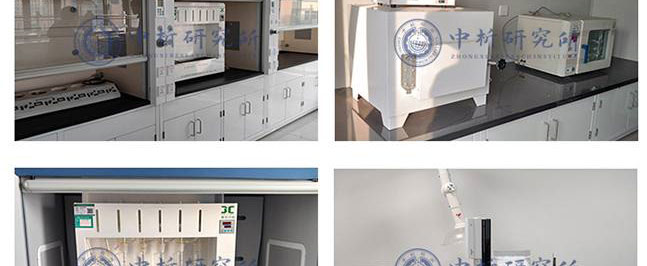
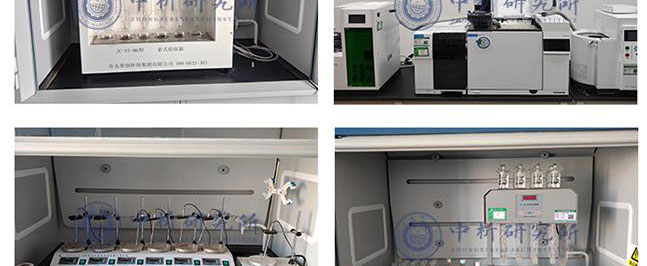
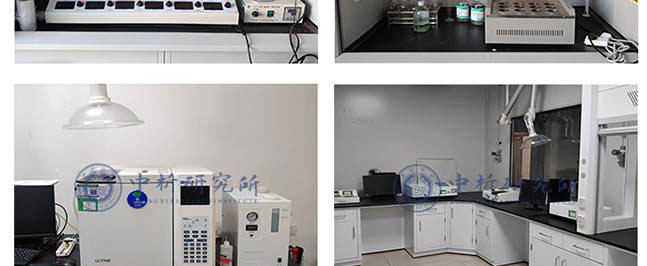
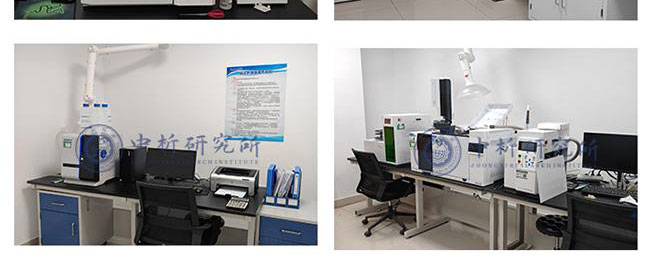
合作客戶(部分)





檢測報告作用
檢測流程






